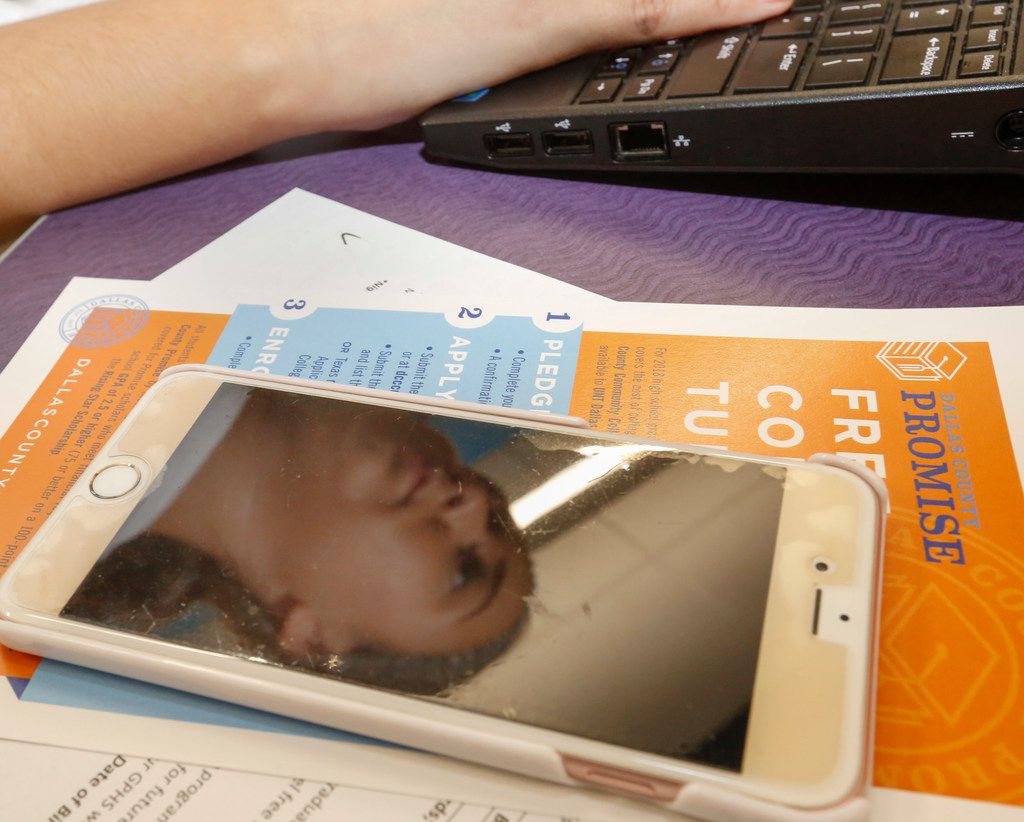Applying to college should be a lot easier, and North Texas colleges are working to make it so

Imagine you are a recent high school graduate. No one in your family has graduated from college and no one around you speaks “college” to help you understand the complicated processes for enrolling, including financial aid, orientation and registration.
Now add COVID-19, which requires you, your high school and your colleges of interest to figure out how to do this work completely virtually. This is the reality for a majority of students in Dallas County. The critical question for us today is what can be done about it.
Dallas is moving forward on two practical solutions.
Dallas County Promise offers free college tuition to more than 21,000 Dallas County high school seniors who sign a pledge, complete financial aid, and enroll in college. While admission is guaranteed at Dallas College (formerly Dallas County Community College District), multiple universities also offer direct admission opportunities to graduating seniors.
Dallas is taking a cue from the state of Idaho, where all high school seniors receive direct admission letters to all the colleges and universities that they qualify to attend. The University of North Texas at Dallas, Texas Woman’s University, Texas A&M Commerce, Midwestern State and Texas A&M Texarkana sent more than 10,000 qualified and uncommitted recent high school graduates direct admission letters this year, welcoming them to higher education.
And through the innovative leadership of Workforce Solutions Greater Dallas, students can explore programs at colleges and universities that lead to good jobs via the new collegeworks.org website.
If we know that the path to economic mobility is through higher education, and the Texas economy relies on these students earning postsecondary skills and credentials, we must be much more proactive and intentional in inspiring and supporting students on the journey through higher education and into a good job.
One of the ways Dallas County Promise supports students and families through the transition from high school to college is by texting. Our team texts with students and parents to help them navigate things like filling out financial aid paperwork and enrolling in college. We have received more than 400,000 texts over the last three years, and the two most common questions are: Have I turned in my financial aid? And where am I in the college enrollment process?
The same colleges and universities offering direct admission have come together to simplify their application processes. First, our higher education leaders agreed on one common checklist for college and university enrollment. Second, this year students will be able to see and measure their own progress on this checklist via their mobile phone, including viewing what is completed and verified, and what might be missing that will prevent them from successfully transitioning from high school to college.
Imagine that you completed a form at a college and that college communicates back to you that it has received the forms, and the college verifies this via your phone in a simple common enrollment checklist. Imagine that you selected a dozen colleges and universities to consider and they all use the same checklist. You can see it all on your phone.
If we are serious about empowering our first-generation college students on their journeys to good jobs, we will place them at the center of this work and begin to serve them and empower them with their data in much simpler and more usable ways. These steps will help to ensure that just as we want our students to be college ready, we know we need our colleges to be far more student ready.
The COVID-19 crisis challenged us all to take a hard look at the inequities that had been normalized through college applications, admission and enrollment. Given that students have a tuition-free college path, it is not acceptable that so many of our prospective first-generation college students aren’t successfully navigating the transition from high school to higher education.
Dallas County Promise serves high-poverty high schools where more than half of the students are considered economically disadvantaged. Yet, over 60% of the more than 15,000 students we worked with enrolled in college in the fall of 2019, far exceeding the average college enrollment rate for the state of Texas.
We are setting our college enrollment goals even higher for this year. We are also adding more goals for equity in college completion, equity in job placement, and equity in earnings as the next targets to ensure that our community can realize our true potential.
Eric J. Ban is managing director of the Dallas County Promise.
Bob Mong is president of the University of North Texas at Dallas.
Drexell Owusu is senior vice president of education and workforce at the Dallas Regional Chamber.
They wrote this column for The Dallas Morning News, July 31, 2020.